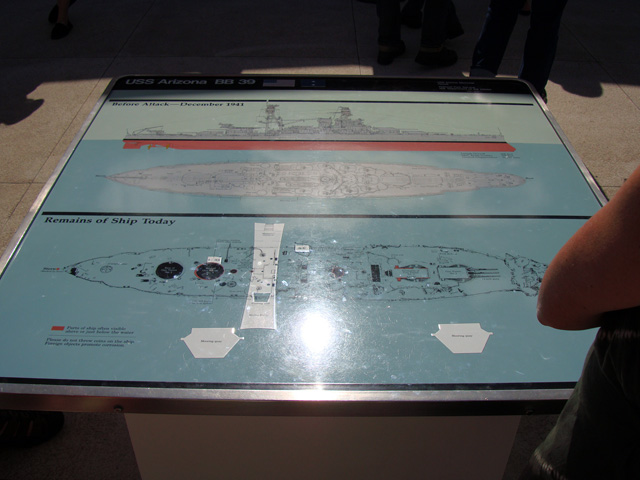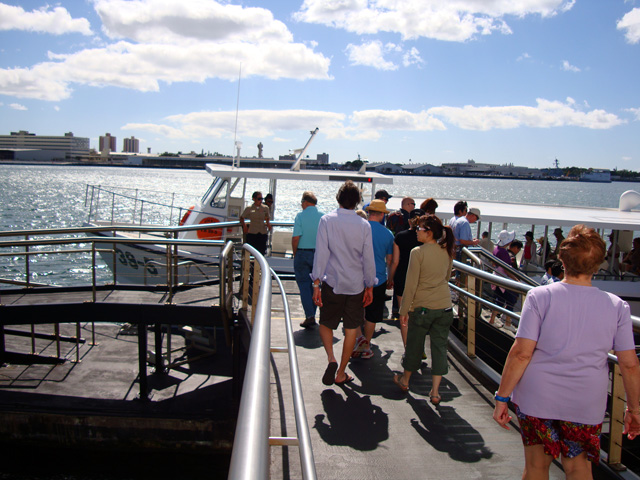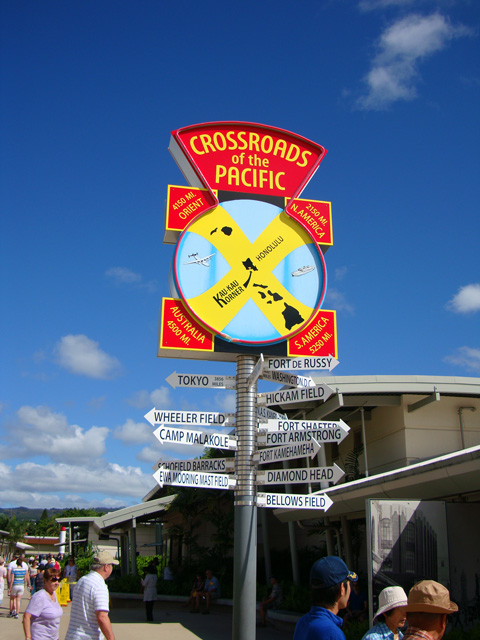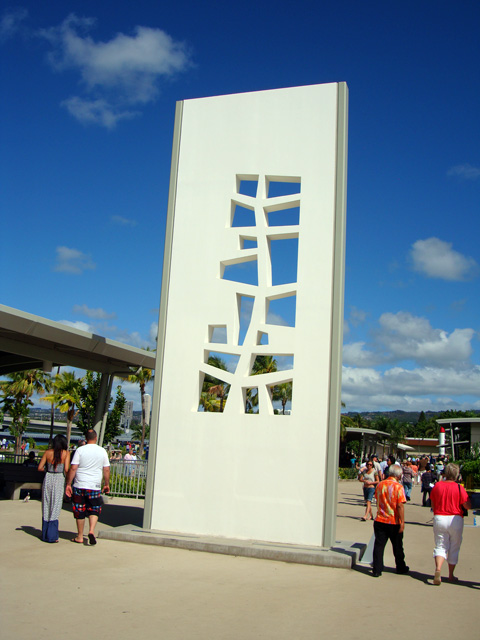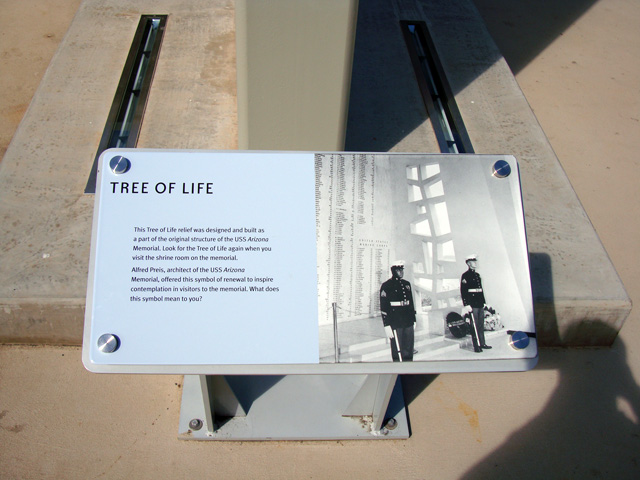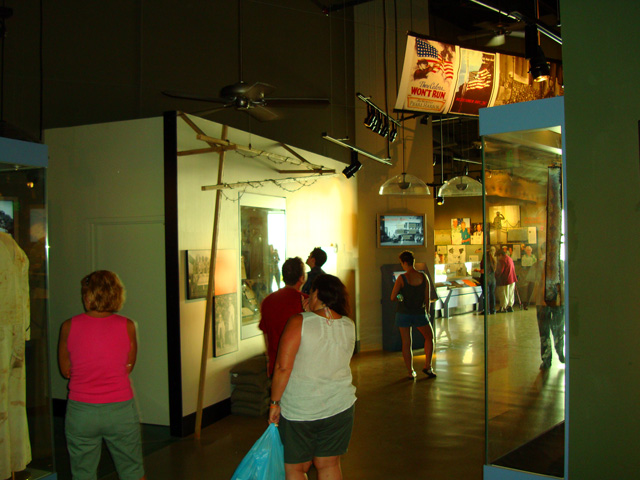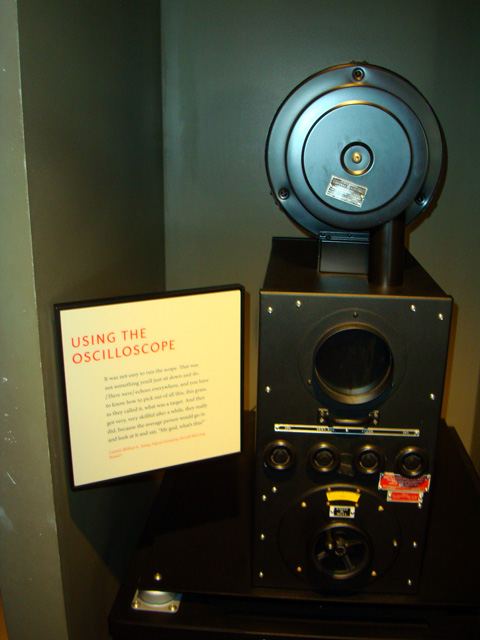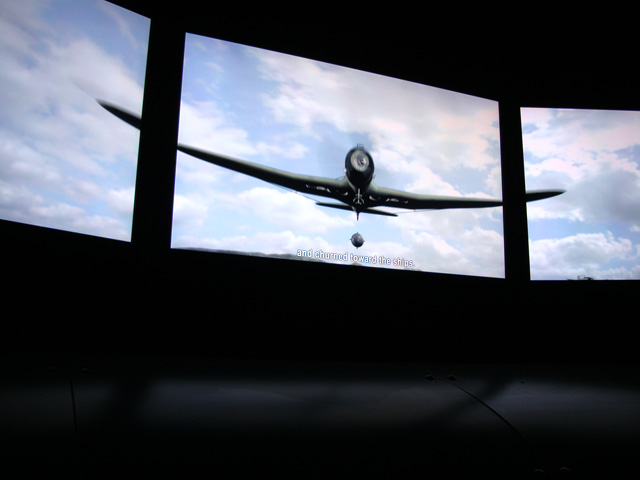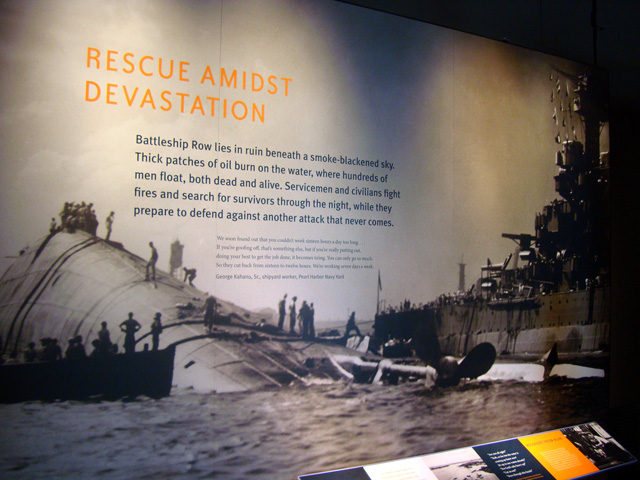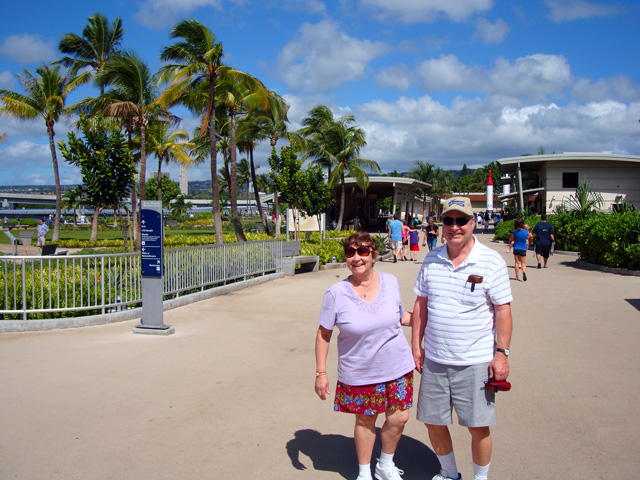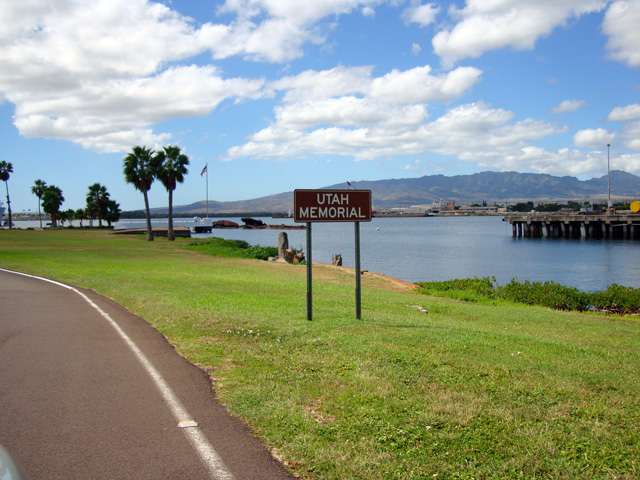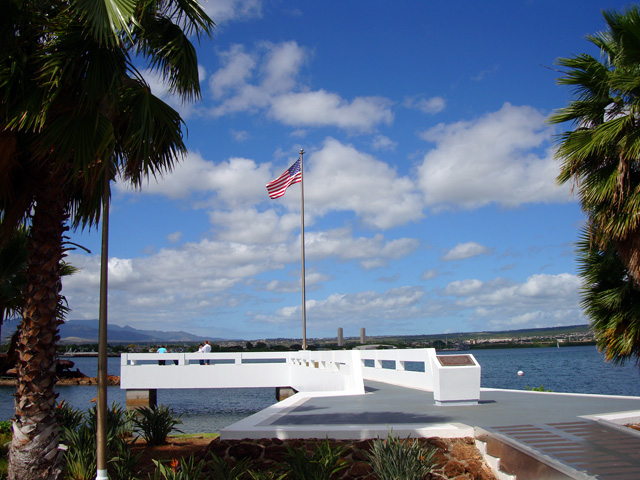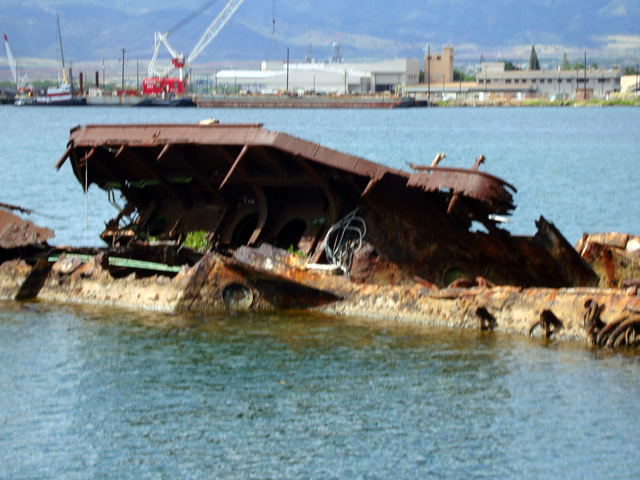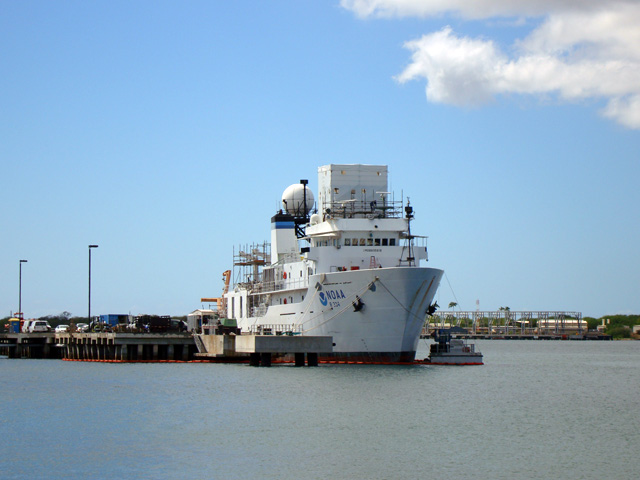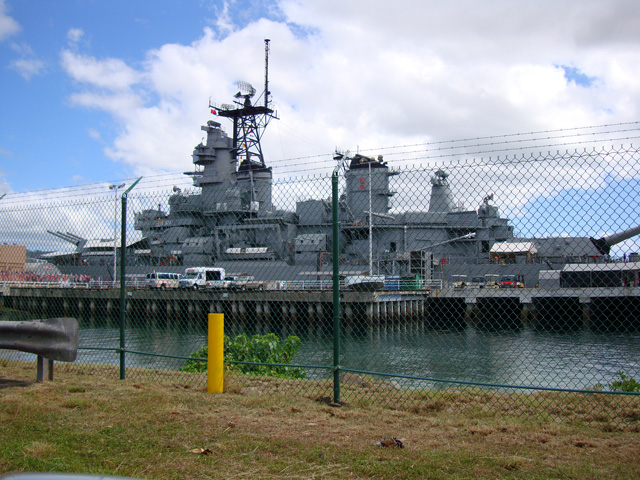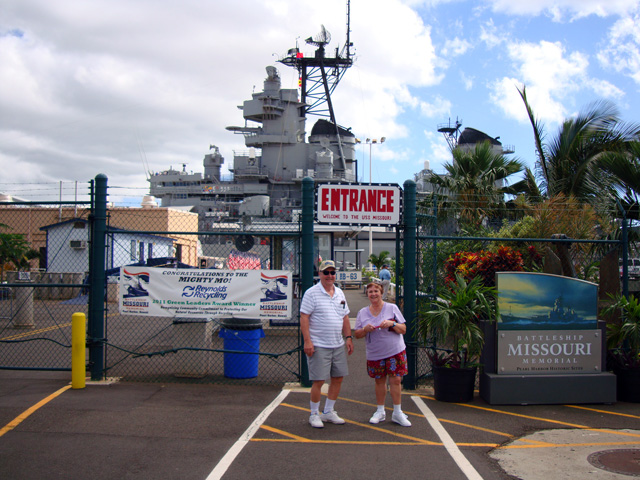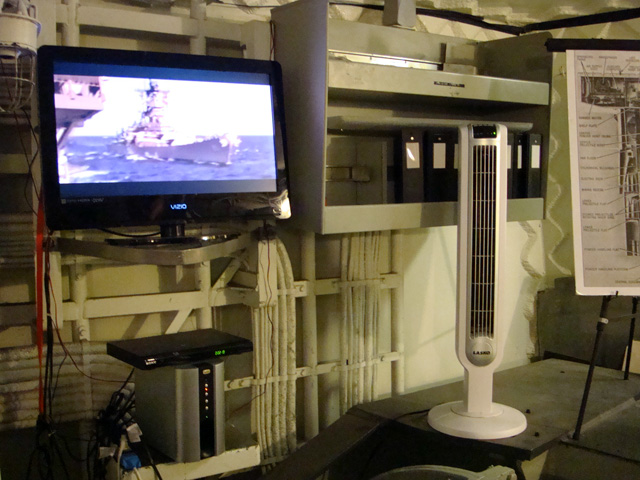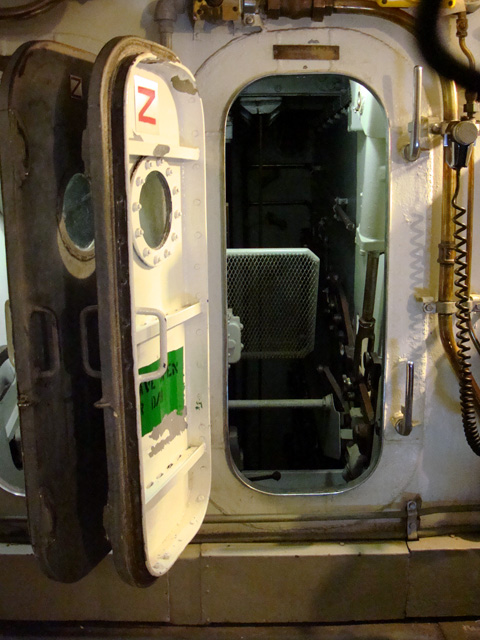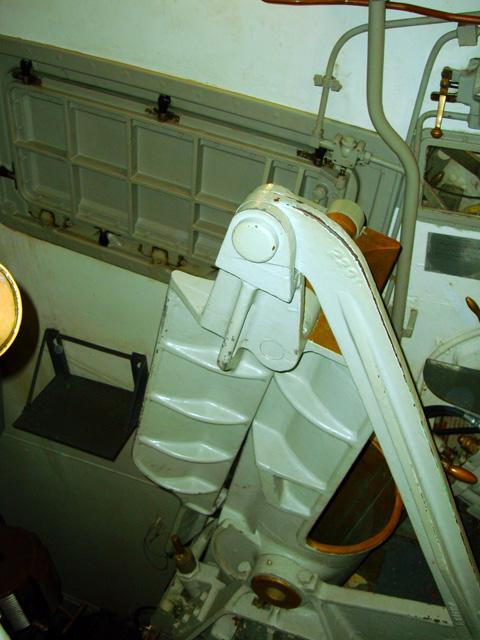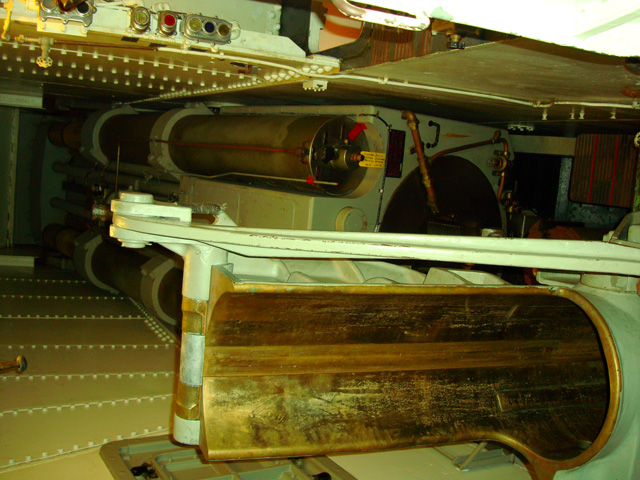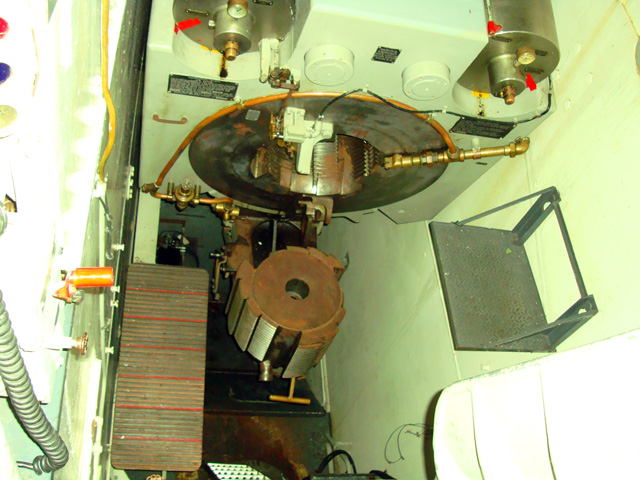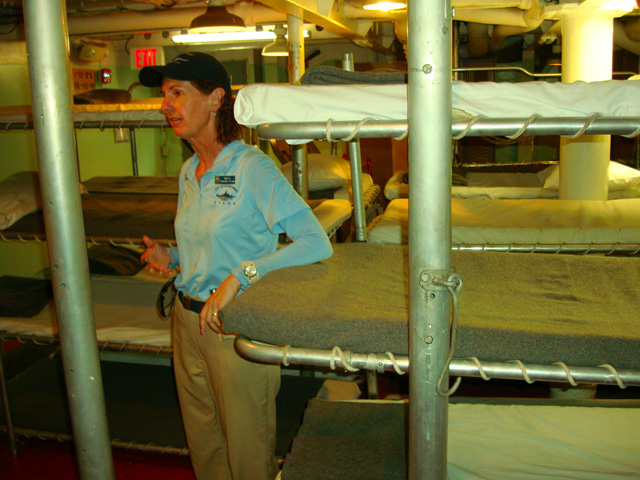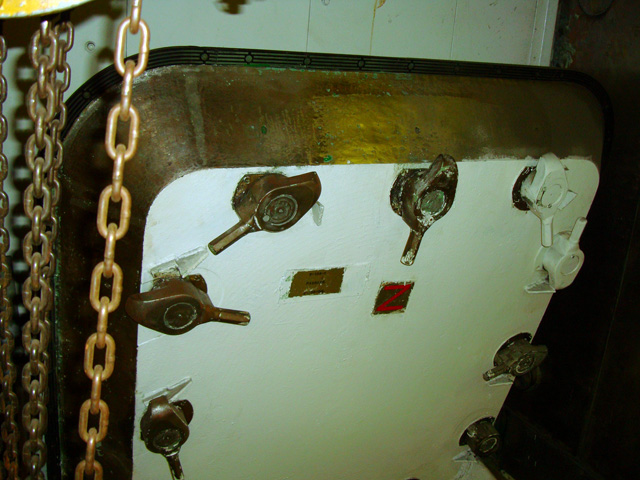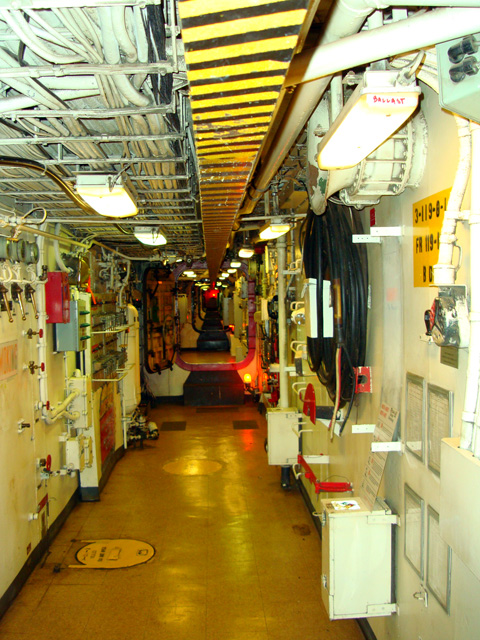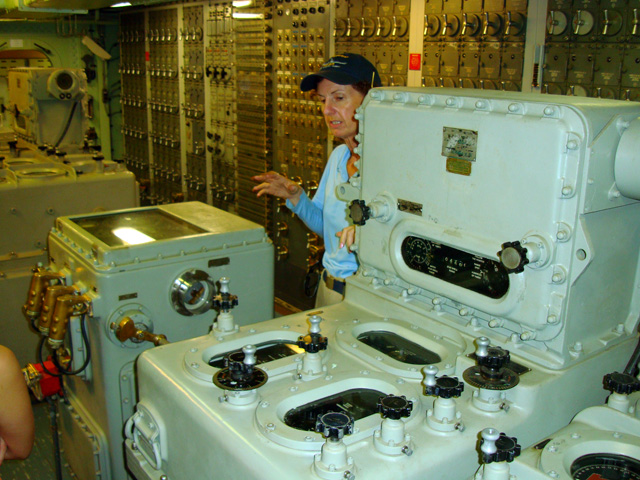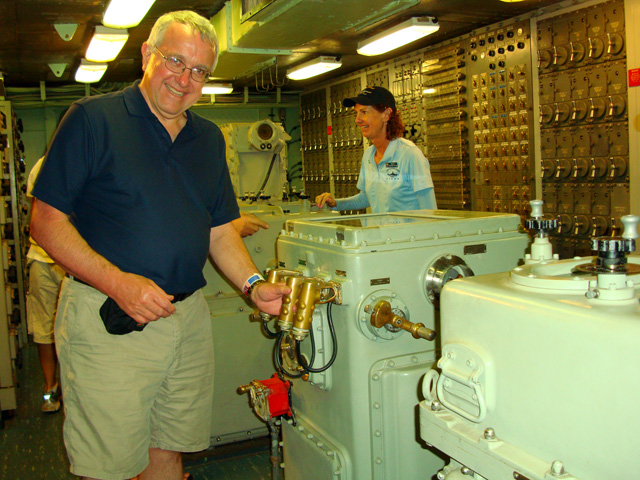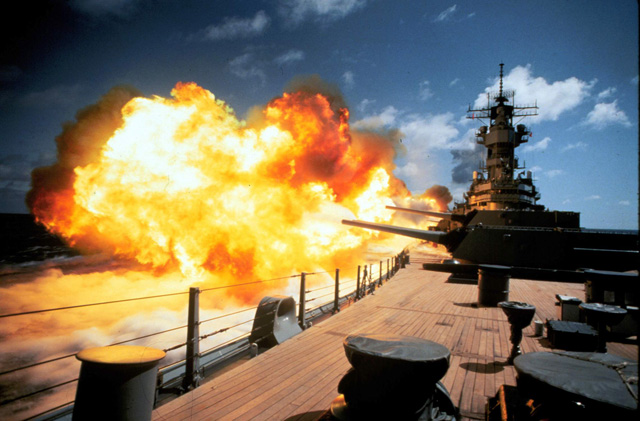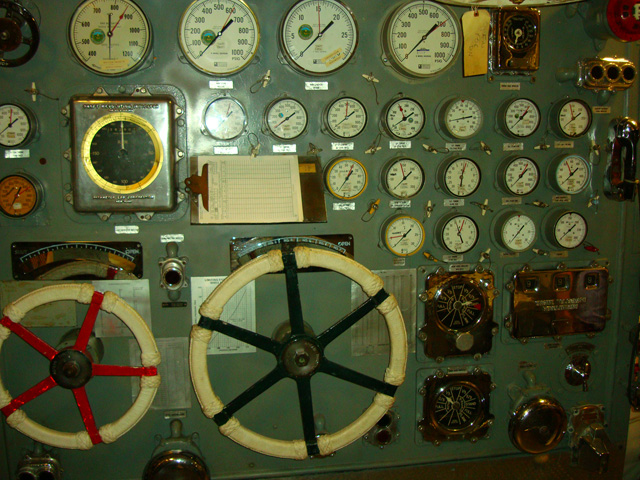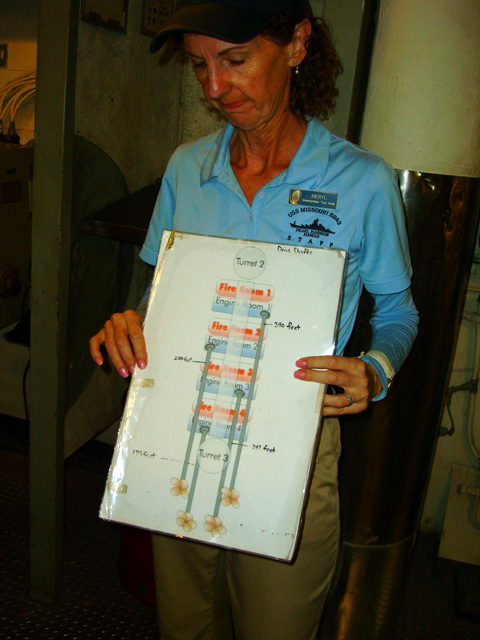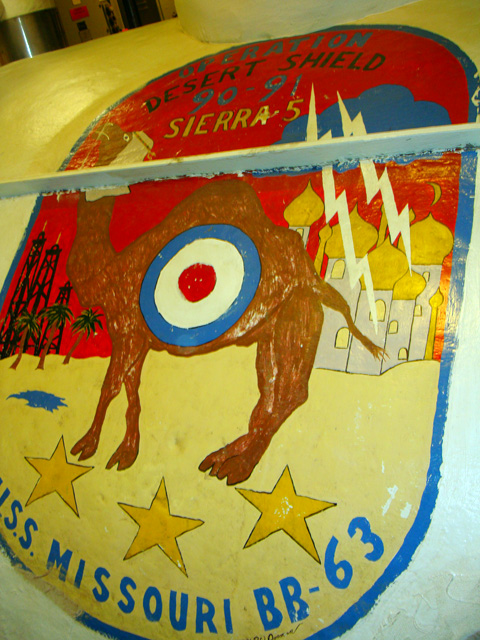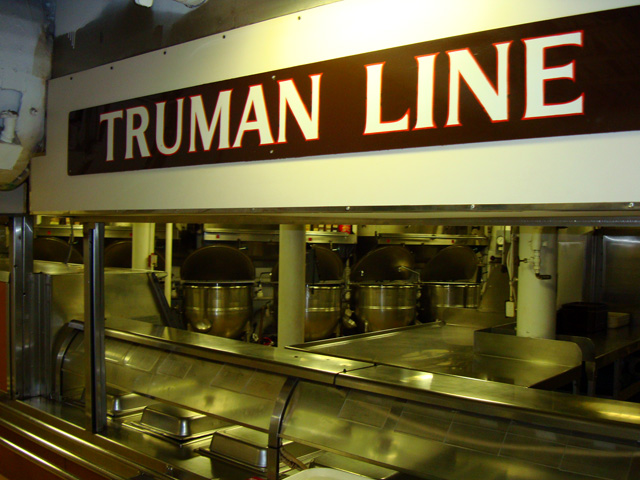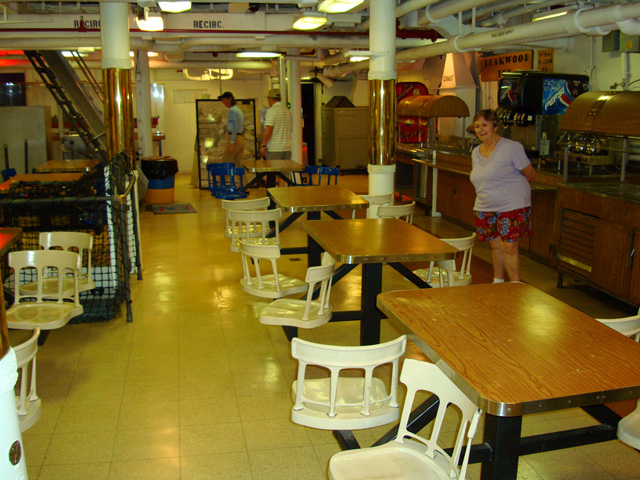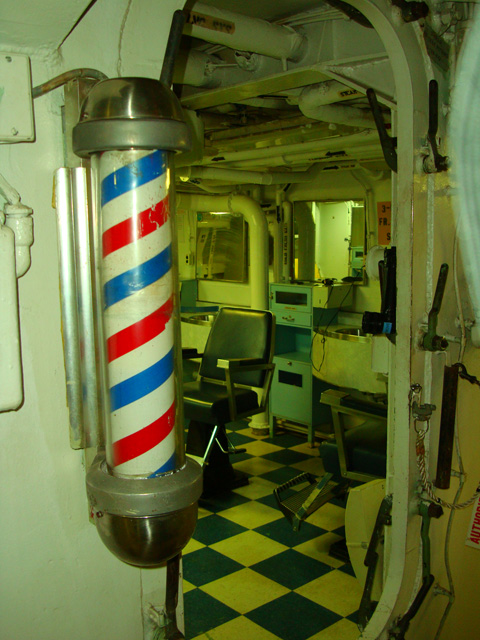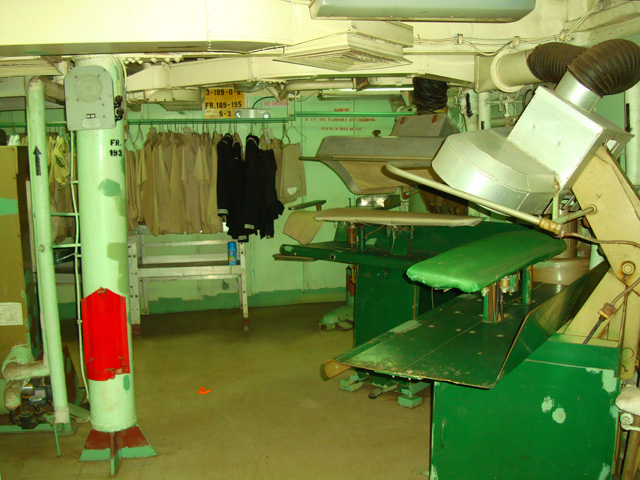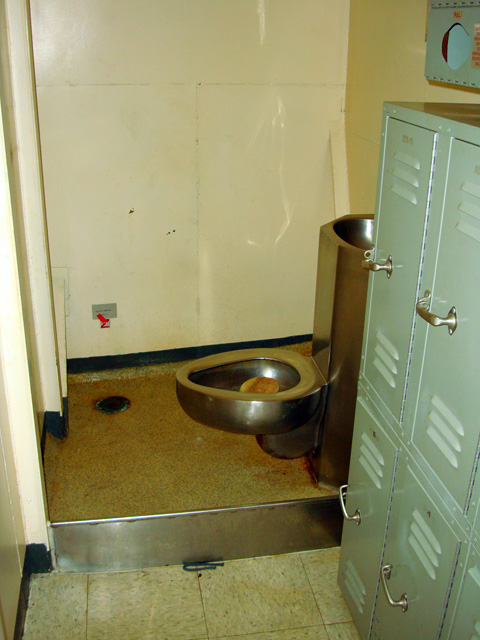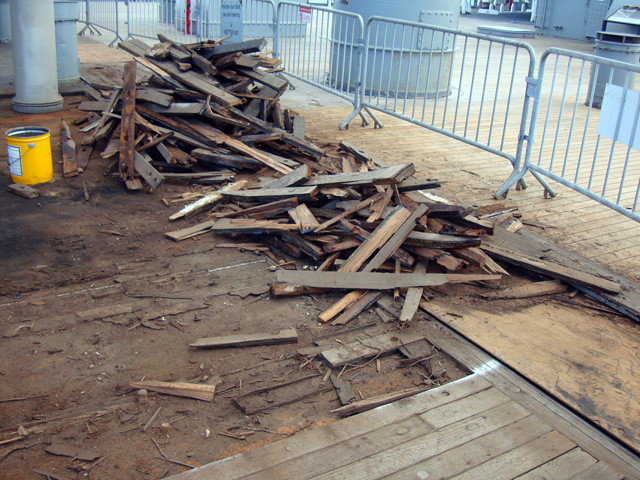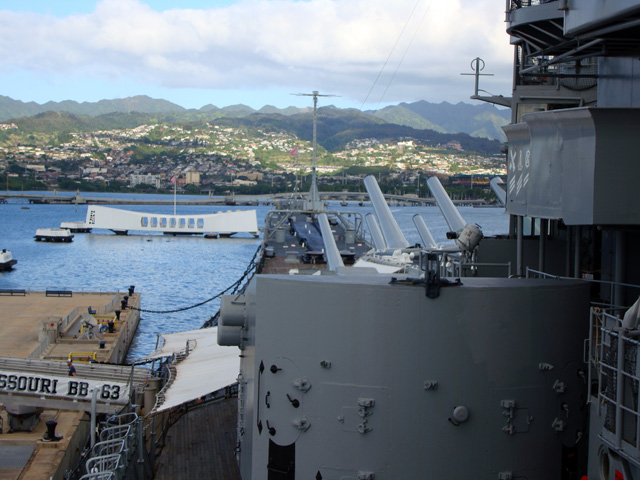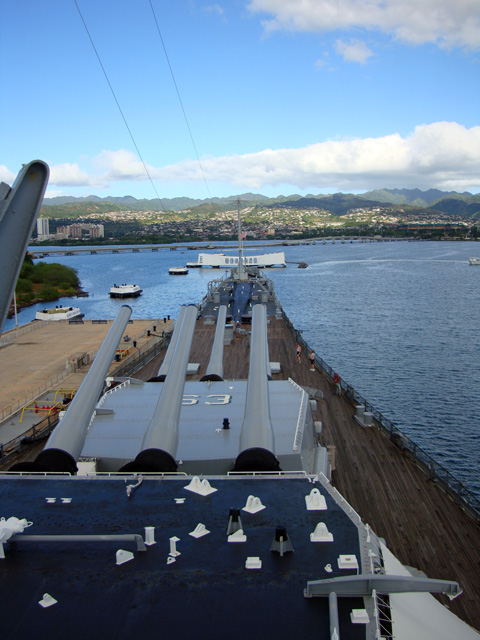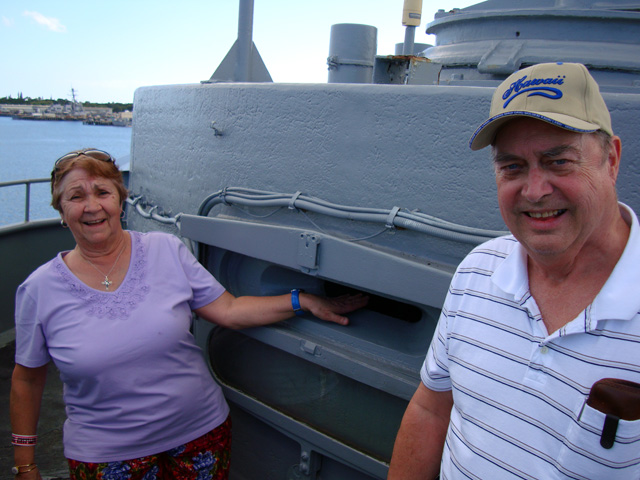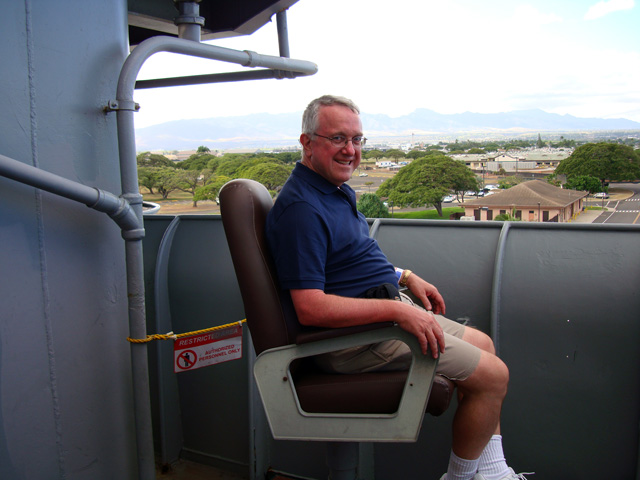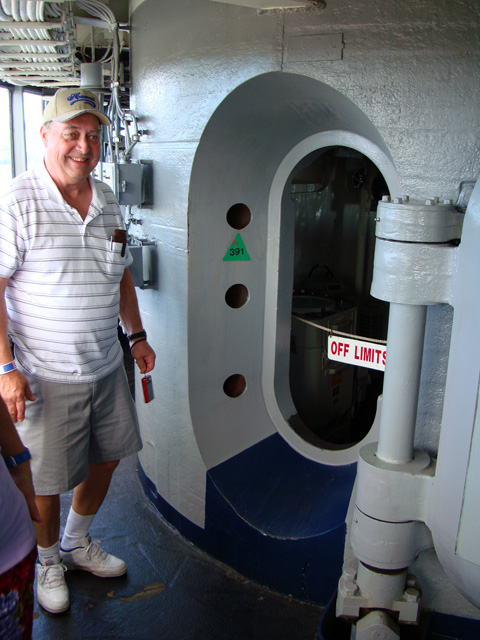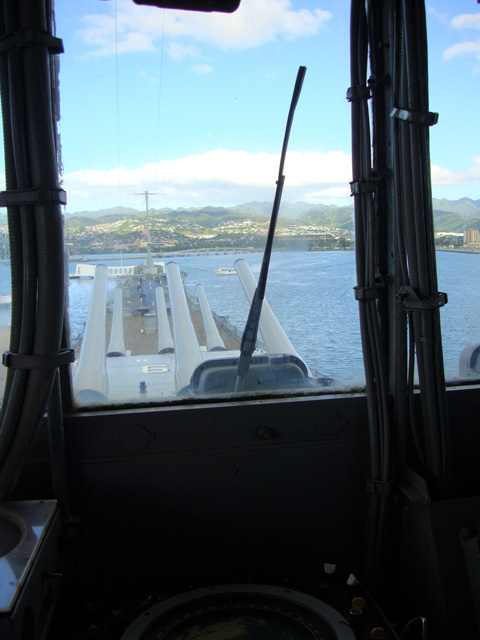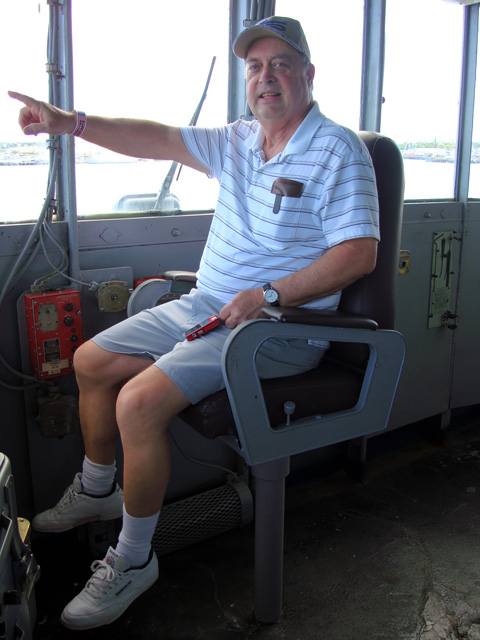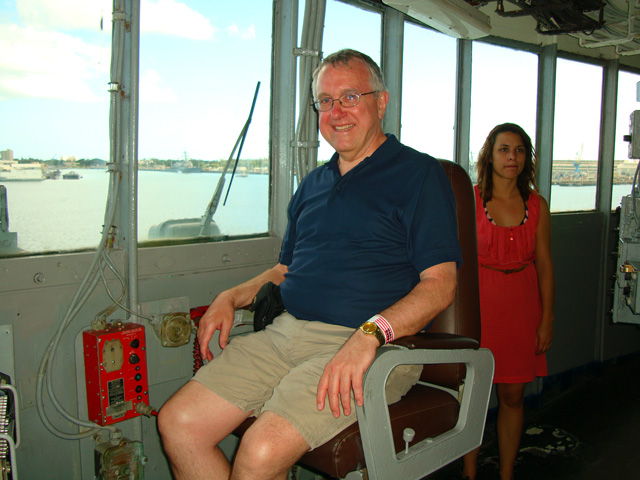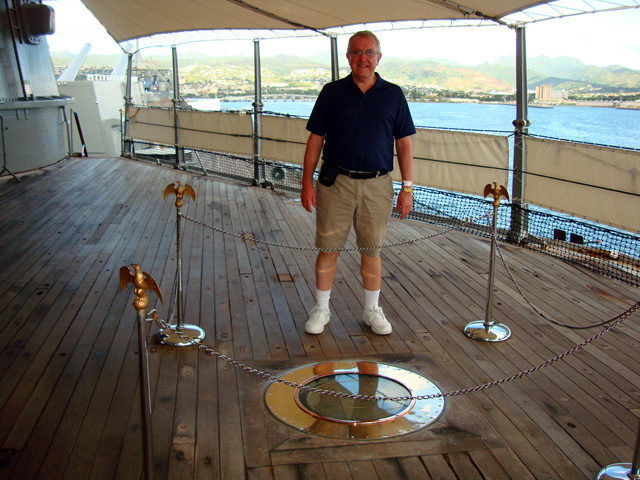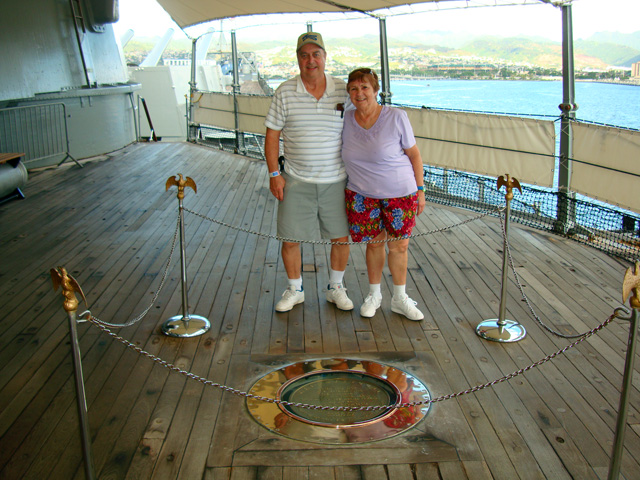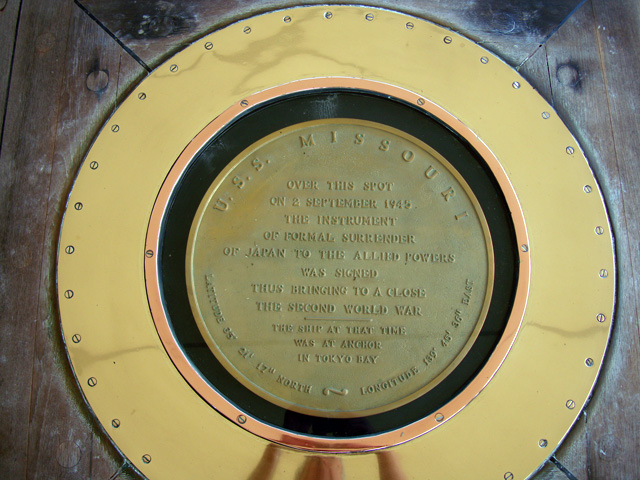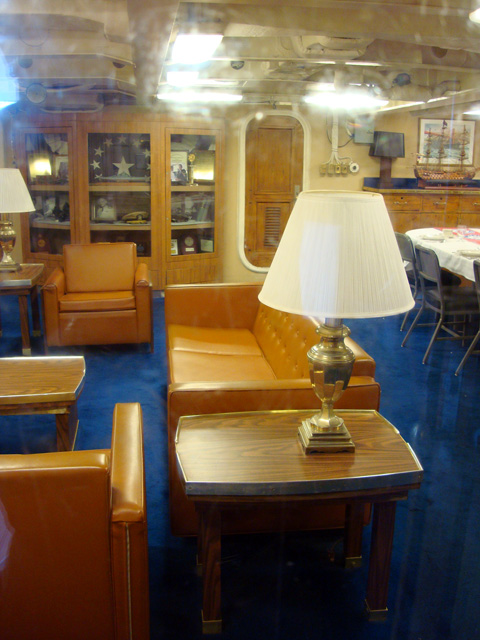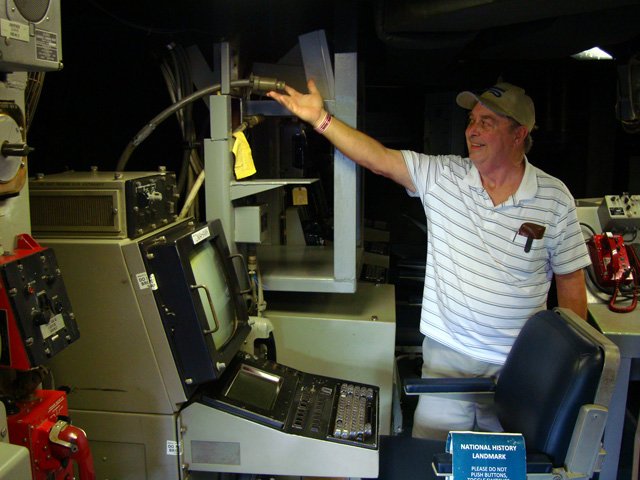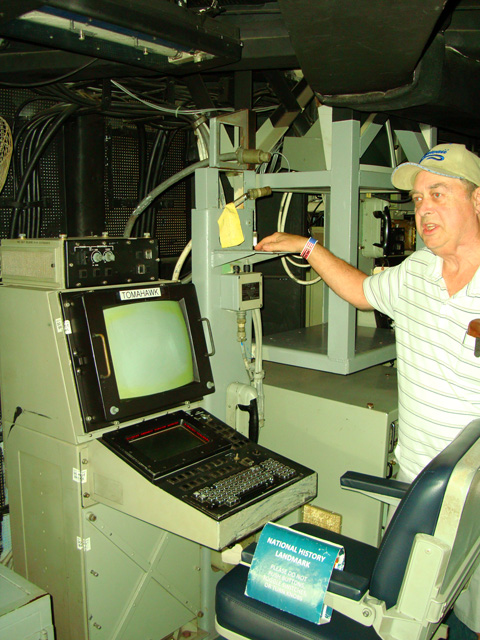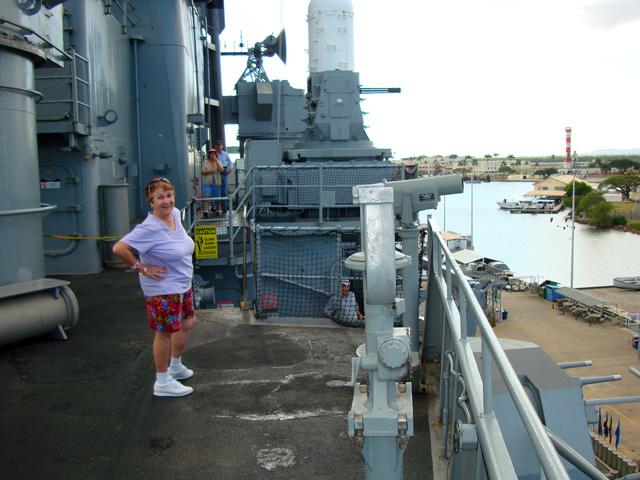Of course we visited the USS Arizona Memorial.
The site of the Arizona wreckage is over there on the right, under that white memorial that has been built above it, but not touching it. The battleship USS Missouri is on the left.
See the Arizona memorial in the center off in the distance?
We're getting ready to see an excellent film that tells all about the December 7, 1941, attack on Pearl Harbor.
Now that we've been properly prepared and informed by the film, we're boarding our ride to the site of the memorial.
We're cautioned to remain quiet and respectful on the ride over.
Here we are.
And there's part of what's left of the ship.
It was tied up here.
And now it rests below. After its sinking, the parts of the ship that were still above the water line were cut away for use as salvage and scrap metal.
The names of those who were lost.
There's not much left to see above the water line.
But there's a lot of ship still down below.
Look -- after all these years the USS Arizona is still leaking oil.
Doug and Bonnie are impressed.
So's Bill.
The people who run the memorial do a good job of keeping the crowds moving. There are docents on duty to answer questions.
This shows the location of the Memorial over the wreckage.
Now we're headed back to the main visitors center.
Pearl Harbor is the crossroads of the Pacific. Look, there's even an arrow pointing my way home to DC.
This symbolizes the "Tree of Life."
OK, if you say so.
Now we're in the visitors center museum.
This early radar device actually picked up the Japanese planes before the attack began, but nobody believed what they were seeing.
The museum features a really nice three-screen presentation on the Japanese attack.
In fact, overall I think this museum rates an A+.
Doug and Bonnie very patiently let Bill take in the museum at his leisure.
Then we all had a fabulous lunch of hot dogs and corn chips.
Then, using Doug's military ID, we drove around the Pearl Harbor Naval Base. Look, over there! Why is there a red fire hydrant out right in the middle of that pretty little park? Oh, I get it...this part of the park is for dogs to play in. And the fire hydrant? Well...
The USS Utah was one of the first ships to be sunk in the Japanese attack. Built in 1909 as a dreadnought battleship, by 1941 the Utah was being used as a gunnery training vessel, and also as practice target for US Navy planes.
And now there's a very nice little memorial here, too.
Some of what's left of the Utah.
Hey, look! It's a NOAA vessel. Maybe someday Peg will take us out for a ride?
This aircraft control tower survived the Japanese attack.
But now with all the military spending cutbacks it may not last much longer.
Now on to the battleship USS Missouri. It wasn't sunk at Pearl Harbor in 1941 because it hadn't been built yet.
Doug and Bonnie are ready for our tour.
We paid a little extra to take the special "Explorers Tour" of the battleship, which took us to parts of the Missouri that few get to see. That's our guide.
Here are six of the Missouri's nine 16-inch guns. These guns' armor-piercing shells shells weighed 2,700 lbs. and they could be fired some 20 miles. Just the thing for bombarding the enemy from off shore.
First a little movie background on the ship.
Doug finds all this interesting. In fact, once upon a time he actually helped install some electronics on this ship.
Back in there is where you load shells into one of those 16-inch guns.
Part of the mechanism for loading the shells.
It's very simple. See, you just slide a little 16-inch shell along that chute...
...and pop it into that 16-inch hole, and then you poke in some gunpowder and close that round door thingy and stand back on that shelf and poke your fingers in your ears and KA-BOOM!
Sleeping quarters. The crew slept in shifts: you'd get your eight hours but then you'd better be ready to roll out because the next guy is tired and he doesn't want to wait to jump into your bunk.
The decks are made of thick steel where you want to insure no enemy bombs will penetrate.
Don't let that door hit you on the way out.
This is Broadway, the corridor that runs the length of the ship.
Our guide explains how to light the fires in the boilers.
These are computers for setting up the big guns.
Bill pulls the trigger.
Pretty impressive, huh? I bet we rattled some windows in Waikiki. No, seriously, Bill grabbed this pic off the internet. It shows the Missouri firing all nine big guns in a broadside.
Controls for the boilers. Those wheels get hot, so they're wrapped in cord.
Our guide shows us where the engines are.
The Missouri last saw action in the Gulf War, Desert Shield.
Well it is the Missouri and Margaret did christen the ship, so you might expect to see some tributes to President Harry S. This is the galley.
You can rent the Missouri for parties (sorry, no cruises) and the ship can accommodate as many as 3,000 guests. So the mess is still operational.
Need a haircut?
Need to get your laundry done?
Been bad? The Missouri is like a floating city, with all the amenities including a jail, or rather, a brig.
The brig's toilet is the only fresh-water toilet on the ship. There's a story behind that, but we don't need to get too deep into it here. See, if a prisoner wanted to make himself sick so he'd be taken from the brig to the infirmary, well, he'd...ah, you figure it out.
Look, they're replacing the ship's teak planking!
I chatted with a couple of the workers and told them my father is a plank owner for the USS Santa Fe. They knew exactly what a plank owner is, and they immediately offered me a little sample to take home to him as a souvenir.
Hey, there's the Arizona. You'd think they'd point the Missouri's guns somewhere else out of respect.
These are some of Missouri's twenty 5" guns.
View from high.
View from low.
Bonnie is telling Doug she's ready to go.
There's the gangplank. Let's go.
But Bill is still playing captain.
Doug's still having fun too.
View from the bridge.
Now Doug's playing captain.
Now Bill again. Will this never end? C'mon, Bonnie's ready to go.
One last stop.
At a very special place.
This is the very spot upon which the Japanese surrendered to end World War II.
Wait, can't leave yet Bonnie. There's the Captain's quarters.
And there's Doug holding a cable that he installed on the Missouri many moons ago.
It's the firing room for some fancy rockets that the Missouri didn't have in WWII.
Doug explains it all.
OK, OK Bonnie, we can go now. |








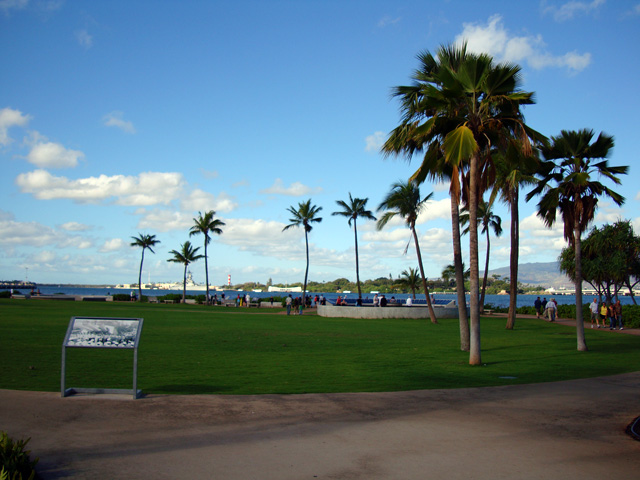
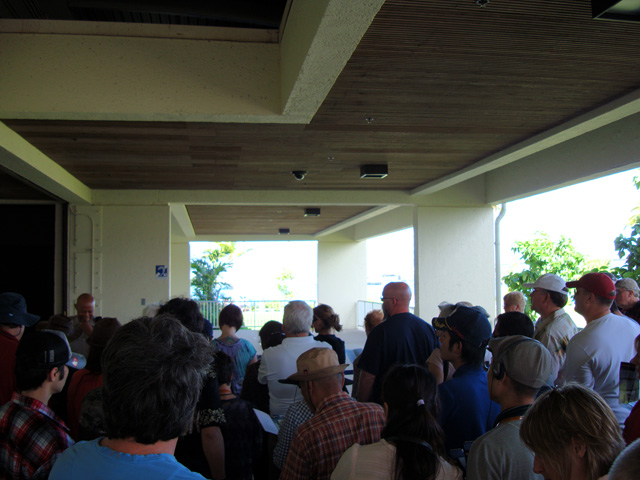
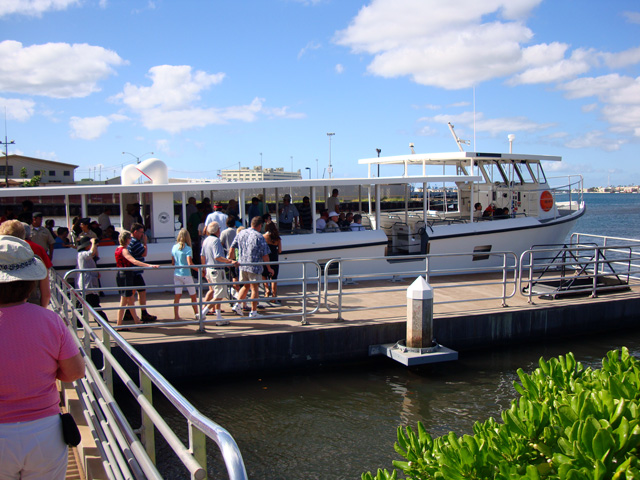


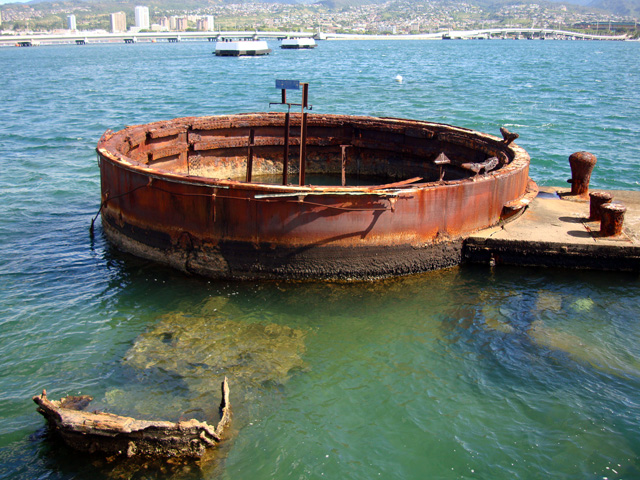
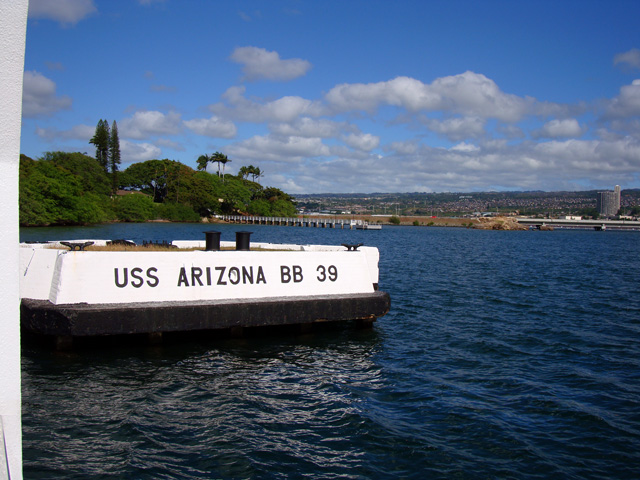
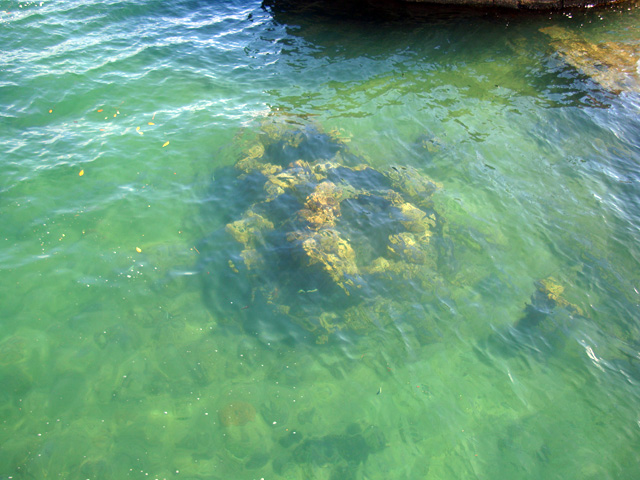

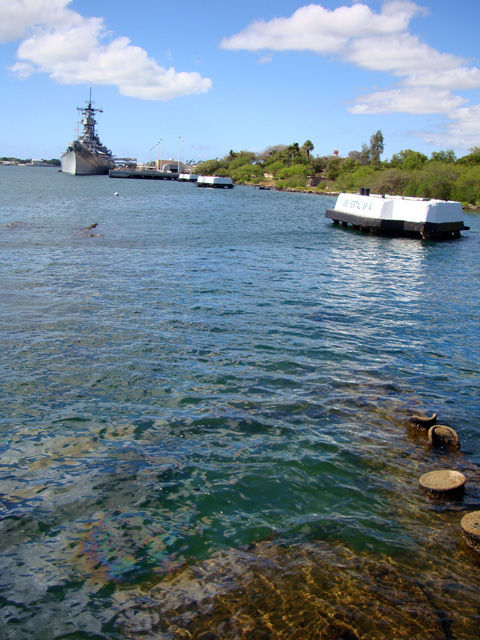
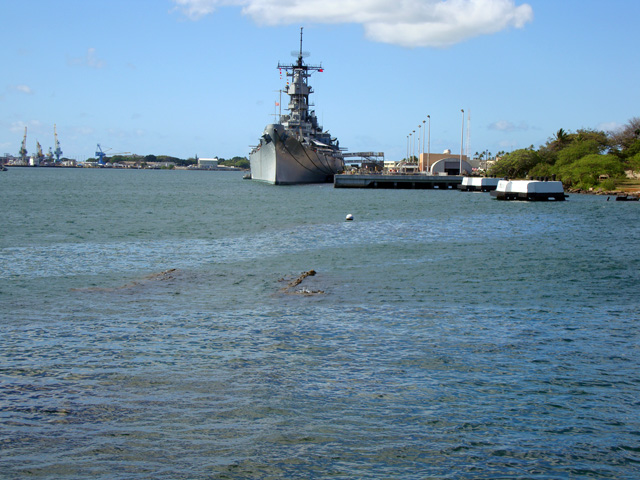


 ]
]
